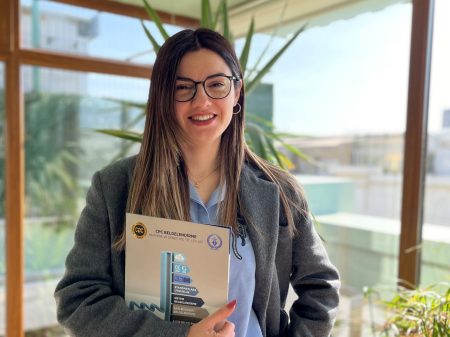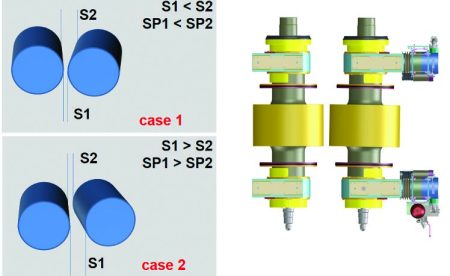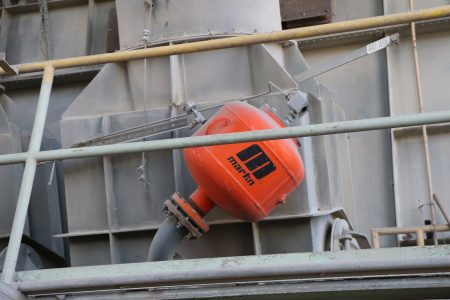Assoc. Prof. Dr. Hasan YILDIRIM
Istanbul technical University (İ.T.Ü) Faculty of Civil Engineering
Chemical plasticizer additives are generally named as normal, super and new generation (hyper) plasticizers. Here discussed the purposes of use, benefits, types and mechanisms of action of the plasticizing additives.
1. Introduction
Nowadays chemical additives, which became one of the indispensable ingredients of concrete due to their melioration in concrete properties, play an active role in limitations of mixing and settlement processes of concrete, in adverse weather conditions, in settlement problems, in the production of pumpable, high-strength and with high durability concrete [1,2].
The chemical additives interact with the cement by entering into a physical, chemical, or physicochemical reaction changing the properties of the concrete.
Additives which are defined in general terms as substances that change the properties of mortar and concrete in their fresh or hardened states [3], have been used extensively in re cent years in Turkey.
2. General Information
In this section, the purposes, types, mechanism of action of the plasticizer additives and the requirements of the plasticizer additives are examined.
2.1. The Intended Use of Normal and Super Plasticizer Additive
Normal plasticizers are generally used for three purposes in practice[4,5,10]:
1. For providing higher strength by reducing the water-cement ratio that it can become processable as the same as plain concrete.
2. To reduce the hydration heat in the bulk concrete, in the case of reducing the amount of cement to obtain the same processing. The use of the additive in this way also means the production of a more economical concrete.
3. Increasing processability to ensure easy settlement in unreachable locations.
The abovementioned usage purposes of normal plasticizers include also the intended purposes of super plasticizers. However, super plasticizers are mostly used for the 3rd purpose, so these additives are especially used for the production of “fluid concrete”. A second usage purpose of super plasticizers is the production of high strength concrete, these additives allows the normal processability at very low watercement ratios.
Super plasticizers have negative effects as well as positive effects. The high processability obtained by using super plasticizer decreases with the loss of settlement in 30 minutes and continues decreasing over time [6]. The loss in this property can be extended to two hours with the addition of special additives in very small percentages. In the new generation super plasticizers which developed in recent years (which are known as hyper in our country) as well as this loss of processability can be eliminated and also the concrete can pass to high durability immediately after one day.
In ready mixed concrete the plasticizers mostly used for abovementioned purposes 1 and 3. This situation improves processability, facilitates the mixing process in the mixer, reduces mixer wall adhesion, facilitates pumpability, prevents concrete disintegration and facilitates the settlement. Apart from these, new generation highly water reducer hyper plasticizers are used in special purpose self-compacting concrete applications. The types of plasticizers are given below.
2.2. Types and Mechanisms of Action of the Plasticizers
In various studies, additives are grouped according to their intended use [7,8,9,10]. In the ACI Committee 212 report [4,10], concrete additives are classified as air entraining, hardening accelerator, water reducer and hardening process setting , fluid concrete additives and various other special purpose additives. High range water reducers or super plasticizer additives in compliance with normal plasticizers are included in the group of water reducing additives and the group of additives for fluid concrete.
Normal plasticizer additives (ASTM C 494 Type A, TS EN 934-2) [11, 12] allow the usage of less water for the same processability and thus getting higher strength [13,14]. The normal plasticizers are separated into four groups according to their chemical bases, lignosulphonic acids containing Ca, Na and NH4 salts, hydrocarboxylic acids resultant of Na, NH4 or triethanolamine salts, carbohydrates and other organic compounds [15]. Lignosulfonates can be thought as a polymer formed by the incorporation of hydroxyl (OH), methoxyl (OCH3), phenyl chain (C6H5) and sulfonic acid (S O3H) groups [15].
Apart from these components, a component which is not yet took place in the literature mostly but which is used as a plasticizing additive raw material is molasses.[16] In sugar production process, after the end of firing and cleaning processes for the production of crystal sugar (at the end of the centrifugation of the final masscuite) the remaining brown syrup which contains 50% of sugar named molasses. According to the business accounts molasses is obtained up to 3.8% – 4% of the amount of beet. Some of the sugar remaining in the molasses is free and some of piyasait is bound in compounds with water and organic potassium salts. In general, molasses’ 75% to 86% is dry matter and 14% t o 75% is water [16].
The plasticizing substance which adsorbed by the cement grains settles to the surface of the grains. The film formed by these materials, whose surface of the grains has collapsed, is negatively charged. Because the negatively charged grains push each other in this way, the dispersive effect of these substances arises. These materials prevent the coagulation and at the same time giving lubricating effect by smoothing the grains lubrication on each other reduces the internal friction of the concrete, which increases processability of the concrete.
Super plasticizer additives reduce the water-cement ratios of high performance concrete to provide very high compressive strength. On the other hand, their fluidity will be high enough to create self-compacting and will not lead to segregation. We can collect super plasticizers in three main groups [10, 17]: modified lignosulfonates, sodium naphthalene (or melamine), sulfonate-formaldehyde polycondensates (NSF or MSF) and carboxylate (or hydroxy carboxylate) salts (HP). This third group is usually a polymeric additive generally containing polyether side bonds inoculated to the polyacrylate main polymer chain (such as comb). The HPs’ began to be produced after the first and second group additives. Hyper plasticizer or new generation super plasticizers’ names are given on the market because of their superior qualities (higher water reduction and fluidity in less quantities) [18].
The most important properties of super plasticizer additives (SP) are the adsorption of long macromolecules on cement particles and eventually dispersion of particles thereby allowing a more extensive hydration and facilitating settlement by reducing the viscosity and lubrication in the liquid medium.
In the first and second group SPs, the cement is produced by the electrical repulsion of the grains due to the fact that the grain surfaces are loaded with the same negative marked electrical charger. In HPs, the size and the stoichiometric texture of the molecules are more effective in achieving the resulting steric hindrance dispersion. Generally, the HPs in the market are not pure carboxylates, are added some proportion of NS F or MS F [17, 18].
It is of course insufficient to examine the sufficiency of SPs only in the area of processability. Besides, it is also a must to examine the hydration, hardening and strengthening processes. Because, SPs effect the combination of the interface liquid, the microstructure and the morphology of hydration products. The cement composition and alkali content are important in these changes.
2.3. Normal, Super and Hyper Plasticizers Used in Turkey
The number of firms that produce such additives in our country or import them from abroad is increasing steadily. The plasticizer additives they release to the market can be collected in t he following t itles.
• Normal plasticizers (with retarder or hardening accelerator)
• Mid-range named plasticizers in practice
• Super plasticizers (also with retarder)
• New generation super (hyper) plasticizers (which either lose their processability early or retain their processability for a long time)
2.4. Required Qualifications for Plasticizer Additives
The required qualifications of additives in the case of using in concrete at equal concrete consistency are seen in Table 1 be low [11, 12].
As a result;
– Companies producing concrete additives have multiplied in our country, this indicates that these additives are used mostly. In addition, they are also exporting these additives, contributing to our economy.
– Due to the earthquakes that have occurred in our country, the use of super plasticizers has risen to the top among the chemical additives with the increase of the concrete quality.
– The not retarder property and usage in every kind of concrete of hybrid super plasticizers and the being economical properties increased the usage of such additives.
– In general; it is obvious that the majority of additives which are used either produced in Turkey or imported provide the required qualifications of these additives.






